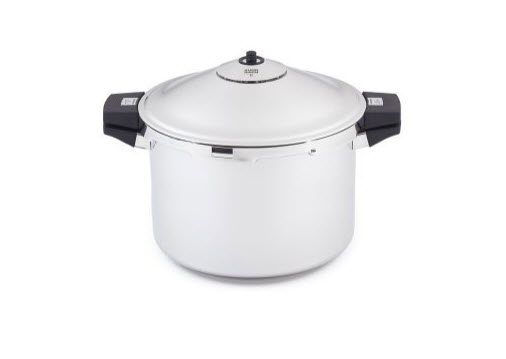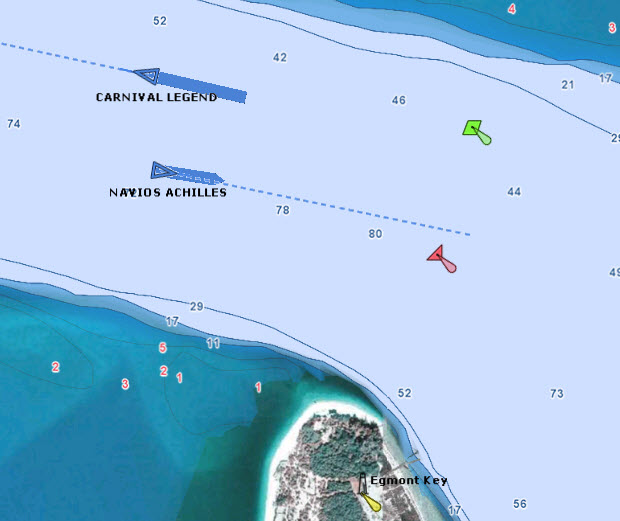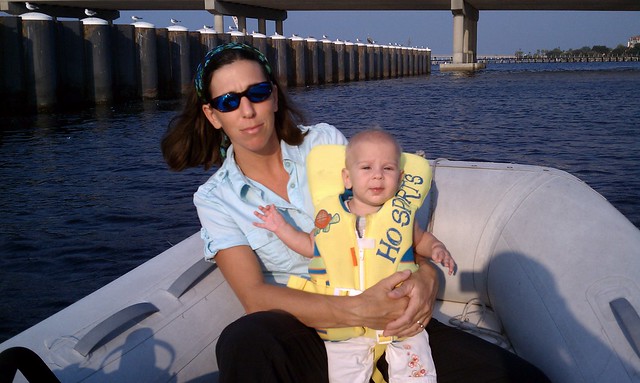When we bought Take Two, all four of the existing toilets went directly into the nearest dumpster. One of them was replaced with a manual Jabsco model and we temporarily lived that way for about 2 years.
During that time, we experienced a wide variety of problems. Incoming sea life caused the bowl to smell awful, and minerals in the salt water contributed to scale buildup in the bowl and the hoses. The doses of vinegar proscribed by many to combat the salt water were oddly coincident with failures of the joker valve, which is responsible for preventing the backflow of flushed contents into the bowl (which also smelled awful). Left unchecked, the scale constricts passages and contributes to clogs.
Oh, the clogs: clogs in the bowl, clogs in the joker valve, clogs in the anti-siphon loop, clogs in the y-valve, clogs in the vent, and worst of all, clogs in the pickup tube of a very full tank. Clearing a clog is a very nasty and hateful job. Ten times out of ten, they are caused by too much toilet paper. For this reason, some boats don’t allow users to flush toilet paper. But that sounds nasty and hateful in its own right.
For all the trouble we had with the toilet as a system, the machine itself was surprisingly trouble free. Servicing a family with four children is hard duty and Jabsco toilets are not the pillar of reliability. They are probably the cheapest units available and have about a hundred parts. Plus, I’m convinced that children are capable of breaking absolutely anything. So I think the Jabsco has done remarkably well.
Boats have to be able to “hold it” when in near-shore or protected waters, so that creates the necessary evil known as the holding tank. I generally give Take Two’s designer a lot of credit for his ingenuity and foresight, but he really screwed the pooch on her holding tanks. Maybe he figured they were just lip service to local regulations and no one would actually use them, which is probably largely the case for her originally intended use in the Caribbean. There are four holding tanks, each located under the floors in the forward cabins and under the beds in the aft cabins. It is very, very difficult to create a holding tank setup that doesn’t stink, and the original tanks just don’t cut it. The one toilet we used therefore pumped into the tank of the one cabin we didn’t use.
Removing the contents from the tank can be done with a shoreside hose through a deck fitting, or overboard through a dedicated pump and thru hull. The pump is a “macerator”, which chops the material with a blade as it is removed from the tank, but the actual suction for the removal is provided by a rubber impeller. It is a seriously flawed design. It seems like we get about 2-3 uses out of the macerator before it stops working and has to be rebuilt. Rebuilding a macerator is my second least favorite job on the boat.
After living with that arrangement for a while I began to conceive what an ideal head setup would look like, and earlier this summer I set about implementing those ideas in our master cabin. The goals were for the toilet to be clean, odor-free, and most importantly, clog-free. Six months later, I feel complete confidence declaring partial success.
The centerpiece is our Raritan Marine Elegance fresh water electric flush toilet. If a toilet can be elegant, this is it. At $700 and practically four parts, it is a polar opposite from the Jabsco design. Using fresh water immediately eliminates much of the odor related to the toilet. Rather than being a simple pedestal, the base is more like a shroud that is designed to be backed up to a wall. It is smooth and clean and even creates the possibility of running the plumbing through the wall, eliminating the “hose theme” decorating most heads.
The electric flush is provided by a powerful motor and a centrifugal pump. No rubber impellers here. And the chopper blade is in the toilet, so nothing but soup ever enters the plumbing. I think its clog-proof, but I'm knocking on wood just to be safe.
The new toilet flushes only to the tank. This is to simplify the plumbing, but also to remove the hole below the waterline. There’s nothing quite like a 1-1/4” thru-hull breaking off in your hand and a geyser of water rushing in. This has happened.
Our tank is also completely different, primarily because it is not in the boat’s living space. Our forward heads are against the watertight “crash” bulkheads that separate our bows from the interior space. While I am loath to drill any hole in my boat, let alone a watertight bulkhead, I felt it was the right thing to do in this case. The pipe through the bulkhead is sealed with a Uni-Seal, so is still watertight, but I also put it very high on the wall. The only way it should become any kind of an integrity issue is if the decks are awash or the boat is inverted. Integrity is pretty much gone at that point anyway.
The tank has two vents, one on each side of the bow. This is partially to encourage airflow, theoretically feeding the aerobic bacteria that keep the tank “sweet”, but also to reduce the likelihood that both could become plugged at the same time. If the vent is plugged, by an insect nest for example, then the contents of the tank can’t be removed.
For evacuation of the tank, we still have a deck fitting for shoreside pumpout, and our own pump to send the stuff overboard. Differences are that each has a separate pickup tube into the new tank. So there is no y-valve to select between them, and if one becomes clogged, the other will still work. Clogging is near impossible since the pickup tubes are 1.5” PVC. Remember, the inlet is only 1” hose. Another advantage is that I can easily rinse the tank and pump from the deck without having to futz with a y-valve.
The pump is a Jabsco diaphragm pump with a 1.5” bore. Again, no damn impellers. It could probably pass a sock. The overboard discharge is above the waterline, which is not ideal because of smell and the mess it leaves on the side of the boat, but it’s safer and I could install it with the boat in the water.
So how does it work? Very well, but there have been a few things I’ve learned the hard way.
After six months the discharge hose has begun to develop a distinct odor. This is disappointing. I originally used SeaLand OdorSafe hose that I found at West Marine. I know now that
Trident 101/102 is much better hose and I’m going to replace the SeaLand as soon as I find some of the Trident stuff.
The Jabsco is on a 50 gallon tank and can accommodate the whole family for about 10 days before filling it. The electric toilet fills its 20 gallon tank within 7 days, with only two adult users. The flush cycles are supposedly programmable, but I have been unable bring its water usage down to where I’m happy with the automatic functions. Instead, I prefer to control the flush water and pump activation manually through momentary buttons on the control panel. I suppose I could also add a partially closed ball valve to the toilet’s supply to restrict the flow.
Because of the tendency to overfill the tank, a gauge is really necessary for us to monitor our capacity. For our purposes, I like the Electrosense and ordered the version that runs from a 9V battery. I haven’t yet installed it, but it's really straightforward and I don’t expect any difficulties.
Finally, with separate tank outlets for the deck pumpout and overboard discharge, I’ve discovered the need for a ball valve between the tank and the discharge pump. When sucking out the contents through the deck, the suction can be enough to invert the valves on the discharge pump. I expect the Coast Guard may also be happier seeing a valve that can be “locked” with a zip tie.
The issues immediately come to mind for most people with regard to an electric toilet, namely power and water usage, and maintenance, are not so much of a concern for me. Even when I think the toilet is overusing water, 20 gallons a week is just not that much. I think our weekly production is somewhere around 400 gallons, so an extra 20 is not going to have a big impact. Now rolling out a second toilet for the kids does give me pause, and I think I’ll have to find a way to regulate the flush water before that happens.
The power consumption is truly negligible for us. Total daily runtime is under a minute.
For maintenance, I really can’t see what could be likely to go wrong with it. I’m probably just not using enough imagination, but this new toilet is way, way simpler than a Jabsco. If you really want the ultimate in simplicity, go get a bucket at Home Depot. But for elegance, I’ll take the electric toilet.





